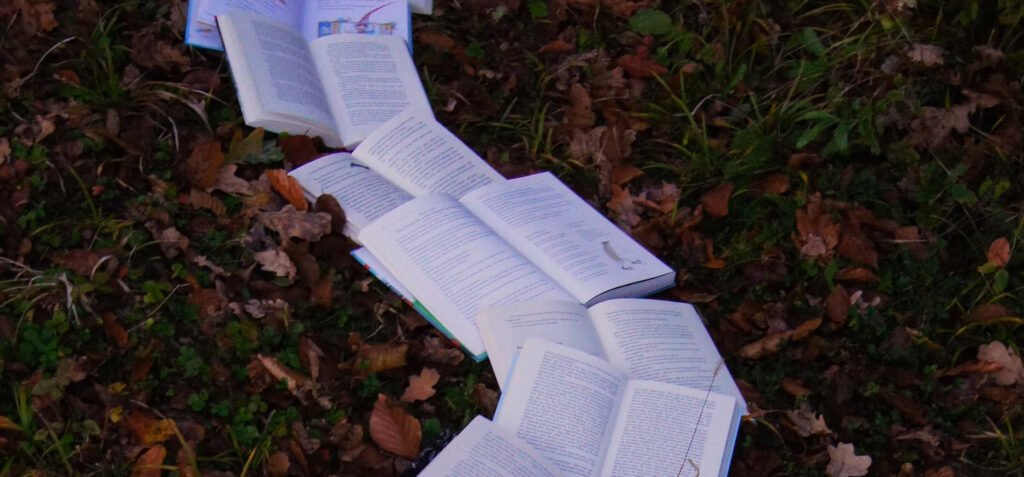
Reading books can be an excellent way to gain knowledge, broaden your horizons, and escape into other worlds. Whether you prefer fiction or non-fiction, there are countless options available. The best books to read are the ones that capture your imagination and take you on a journey. Ultimately, the best book to read is the one that speaks to you and leaves you feeling inspired, entertained, or enlightened.
Some classics that are always worth reading include:
- Charlotte’s Web ByE.b. White
- The Fault In Our Stars By John Green
- Jane Eyre By Charlotte Bronte
- To Kill A Mockingbird By Harper Lee
- The Color Purple By Alice Walker
- Little Women By Louisa May Alcott
- In Cold Blood By Truman Capote
- Mrs Dalloway By Virginia Woolf
- 1984 By George Orwell
- I Am Malala By Malala Yousafzai
- Moby Dick By Herman Melville
- Beloved By Toni Morrison
- Pride & Prejudice By Jane Austen
- Ulysses By James Joyce
- Middlesex By Jefferey Eugenides
- Diary Of A Young Girl By Anne Frank
- The Trial By Franz Kafka
- My Brilliant Frined By Elena Ferrante
- Leaves Of Grass By Walt Whitman
- Waiting For Godot By Samuel Beckett
- Atonement By Ian Mc Ewan
- Alice In Wonderland By Lewis Carroll
- Inferno By Dante Alighieri
- The God Of Small Things By Arundhati Roy
- The Handmaid’s Tale By Margaret Atwood
1) Charlotte’s Web By E.b. White
“Charlotte’s Web” is a children’s novel by E.B. White, first published in 1952. The story revolves around a pig named Wilbur and his friendship with a spider named Charlotte, who tries to save him from being slaughtered. The book has become a beloved classic, known for its themes of friendship, loyalty, and sacrifice.
2) The Fault In Our Stars By John Green
“The Fault in Our Stars” is a young adult novel by John Green, first published in 2012. The story follows the lives of two teenagers with terminal illnesses who fall in love and embark on a journey of self-discovery. The book has been praised for its realistic portrayal of illness and its themes of love, loss, and hope.
3) Jane Eyre By Charlotte Bronte
“Jane Eyre” is a classic novel by Charlotte Bronte, first published in 1847. The story follows the life of Jane Eyre, an orphan who becomes a governess and falls in love with her employer, Mr. Rochester. The book is known for its themes of social class, gender roles, and individuality.
4) To Kill A Mockingbird By Harper Lee
“To Kill a Mockingbird” is a Pulitzer Prize-winning novel by Harper Lee, first published in 1960. The story takes place in the 1930s and follows the life of a young girl named Scout Finch and her family in a racially divided Alabama town. The book is known for its themes of racism, justice, and coming-of-age.
5) The Color Purple By Alice Walker
“The Color Purple” is a Pulitzer Prize-winning novel by Alice Walker, first published in 1982. The story follows the life of Celie, a poor African American woman living in the rural South, and her journey towards self-discovery and empowerment. The book is known for its themes of race, gender, and social inequality.
6) Little Women By Louisa May Alcott
“Little Women” is a classic novel by Louisa May Alcott, first published in 1868. The story follows the lives of four sisters – Meg, Jo, Beth, and Amy – as they navigate the challenges of growing up during the American Civil War era. The book is known for its themes of family, sisterhood, and coming-of-age.
7) In Cold Blood By Truman Capote
“In Cold Blood” is a non-fiction novel by Truman Capote, first published in 1966. The book tells the true story of the brutal murder of a Kansas family and the subsequent investigation and trial of the killers. The book is known for its groundbreaking style and its exploration of the psychology of crime.
8) Mrs Dalloway By Virginia Woolf
“Mrs Dalloway” is a novel by Virginia Woolf, first published in 1925. The story takes place over the course of a single day in the life of Clarissa Dalloway, a high-society woman in post-World War I London. The book is known for its stream-of-consciousness style and its exploration of themes of identity, gender, and mental illness.
9) 1984 By George Orwell
“1984” is a dystopian novel by George Orwell, first published in 1949. The story takes place in a totalitarian society where individualism is suppressed and the government controls every aspect of people’s lives. The book is known for its portrayal of a bleak future and its exploration of themes of power, propaganda, and resistance.
10) I Am Malala By Malala Yousafzai
“I Am Malala” is an autobiography by Malala Yousafzai, first published in 2013. The book tells the story of Malala’s life growing up in Pakistan and her fight for girls’ education in the face of Taliban oppression. The book is known for its inspiring message of hope and its exploration of themes of courage, activism, and the power of education.
11) Moby Dick By Herman Melville
“Moby-Dick” is a novel by Herman Melville, first published in 1851. The story follows the obsessive quest of Captain Ahab for revenge against the white whale that destroyed his ship and took his leg. The book is known for its detailed descriptions of whaling and its exploration of themes of obsession, revenge, and the nature of humanity.
12) Beloved By Toni Morrison
“Beloved” is a novel by Toni Morrison, first published in 1987. The story tells the fictional tale of Sethe, a former slave who escaped to freedom but remains haunted by the memories of her past. The book is known for its exploration of the legacy of slavery and its impact on African American identity and culture.
13) Pride & Prejudice By Jane Austen
“Pride and Prejudice” is a novel by Jane Austen, first published in 1813. The story follows the life of Elizabeth Bennet and her family as they navigate social relationships in Regency England. The book is known for its witty dialogue, complex characters, and exploration of themes of marriage, social class, and gender roles.
14) Ulysses By James Joyce
“Ulysses” is a novel by James Joyce, first published in 1922. The story follows the lives of Leopold Bloom and Stephen Dedalus over the course of a single day in Dublin, Ireland. The book is known for its experimental style, complex narrative structure, and exploration of themes of identity, sexuality, and the human experience.
15) Middlesex By Jefferey Eugenides
“Middlesex” is a novel by Jeffrey Eugenides, first published in 2002. The story follows the life of Cal, a hermaphrodite who grows up in Detroit and struggles to understand his gender identity. The book is known for its exploration of themes of gender, identity, and cultural assimilation, as well as its lyrical prose and complex characters.
16) Diary Of A Young Girl By Anne Frank
“The Diary of a Young Girl” is a book written by Anne Frank, a Jewish girl who lived in hiding with her family during the Nazi occupation of the Netherlands in World War II. The book is a diary that Anne kept from 1942 to 1944, and it is known for its intimate portrayal of life in hiding, as well as its exploration of the human experience and resilience in the face of extreme adversity. It has become a symbol of hope and courage for many people around the world.
17) The Trial By Franz Kafka
“The Trial” is a novel by Franz Kafka, first published in 1925. The story follows the life of Josef K., a bank clerk who is arrested and prosecuted by a mysterious and oppressive legal system. The book is known for its exploration of themes of bureaucracy, alienation, and existential angst, and it has become a classic of 20th-century literature.
18) My Brilliant Frined By Elena Ferrante
“My Brilliant Friend” is a novel by Elena Ferrante, first published in 2011. The book is the first in a series called the Neapolitan Novels, which follows the lives of two friends, Elena and Lila, as they grow up in Naples, Italy, from the 1950s to the 21st century. The novel is known for its exploration of themes of friendship, identity, and class, as well as its vivid portrayal of life in Naples.
19) Leaves Of Grass By Walt Whitman
“Leaves of Grass” is a collection of poems by Walt Whitman, first published in 1855. The book is known for its celebration of democracy, nature, and individualism, as well as its frank and sensual treatment of sexuality. It has become a classic of American literature and is considered one of the most important works of poetry in the English language. Whitman continued to revise and expand the collection throughout his life, and it now contains over 400 poems.
20) Waiting For Godot By Samuel Beckett
“Waiting for Godot” is a play by Samuel Beckett, first published in French in 1952 and later translated into English. The play follows the lives of two men, Vladimir and Estragon, as they wait by a tree for the arrival of a man named Godot. The play is known for its exploration of themes of existentialism, absurdity, and the human condition, and it has become a classic of 20th-century literature and theater.
21) Atonement By Ian Mc Ewan
“Atonement” is a novel by Ian McEwan, first published in 2001. The book tells the story of a young girl, Briony Tallis, who falsely accuses her sister’s lover of a crime, leading to devastating consequences for all involved. The novel explores themes of guilt, love, and the power of storytelling. It has been widely praised for its intricate plot, rich character development, and vivid descriptions of wartime England.
22) Alice In Wonderland By Lewis Carroll
“Alice’s Adventures in Wonderland” is a novel by Lewis Carroll, first published in 1865. The book follows a young girl named Alice as she falls down a rabbit hole into a fantastical world full of peculiar creatures and nonsensical situations. The story has become a beloved classic of children’s literature, known for its imaginative and whimsical storytelling, memorable characters, and playful use of language.
23) Inferno By Dante Alighieri
“Inferno” is the first part of Dante Alighieri’s epic poem “The Divine Comedy,” written in the early 14th century. The poem tells the story of Dante’s journey through Hell, Purgatory, and Heaven, guided by the poet Virgil. “Inferno” specifically focuses on Dante’s descent into the depths of Hell, where he encounters various sinners and witnesses their punishments. The poem is considered a masterpiece of Italian literature and a landmark work of Western literature as a whole.
24) The God Of Small Things By Arundhati Roy
“The God of Small Things” is a novel by Indian author Arundhati Roy, published in 1997. The story is set in the southern Indian state of Kerala and follows the lives of a family of Syrian Christian background, exploring themes of love, loss, and social discrimination. The novel received critical acclaim and won the Booker Prize in 1997, establishing Roy as a prominent literary voice in India and beyond.
25) The Handmaid’s Tale By Margaret Atwood
“The Handmaid’s Tale” is a dystopian novel by Canadian author Margaret Atwood, published in 1985. The story is set in a totalitarian theocratic state in which women are forced to serve as “handmaids,” or reproductive surrogates, for the ruling class. The novel has been highly influential in feminist literature and has been adapted into a successful television series.
You may also read:
- Top 31 Foods That Boost Your Sex Drive
- How to Choose the Best Preschool for Your Toddler
- Top 10 Essential Tips For Comfortable Traveling During Pregnancy
- Top 10 Tips When Buying a Used Car Privately in the UK
- 10 Unique Las Vegas Wedding Ideas for an Unforgettable Ceremony
- 25 Essential Beauty Tips You Need To Know
- The 7 Best TED Talks You Need To Know
- Elon Musk Set to Become World’s First Trillionaire by 2027: Report
- The Top 10 Worst Investment Mistakes Since 1876
- Sam Altman’s Advice to College Students and Ambitious 19-Year-Olds
- Top 10 Service Business That Makes You at Least $10K/Month
- Top 10 Websites That You Probably Didn’t Even Know About
- The Top 10 Laptops of 2024 – A Comprehensive Guide
- What’s In A Cigarette? – A Comprehensive Guide
- 7 Simple Reasons Why You Need a Network Security Camera for Your Home
- 10 Powerful Tips to Stop Smoking
- 10 Important Things to Consider Before Designing a New Kitchen
- Simple Weight Loss Feasting Tips for the Holiday Season
- 10 Ways to Save on Homeowners Insurance
- 5 Ways to Stay Warm in Winter








